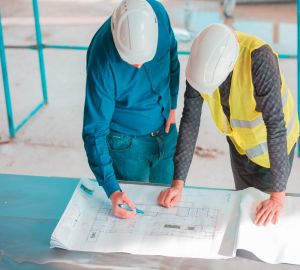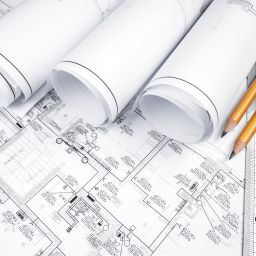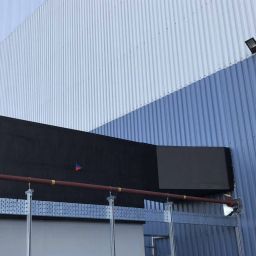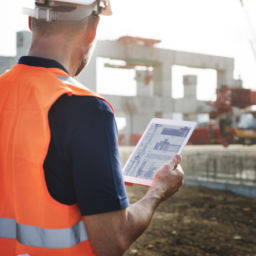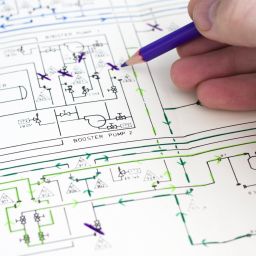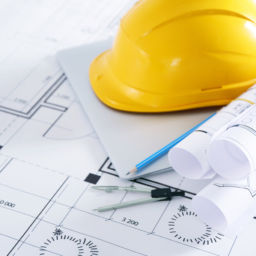
When preparing a bid for a construction project, an accurate takeoff ensures you won’t overcharge or undercharge.
Estimating is the forecasting of the resources needed to complete a construction project. It is also a projection of the costs associated with the project.
If you’ve worked in the construction industry, you probably have heard of the term “takeoff” or at least know what it means.
A material takeoff is an extensive list of the required materials for a project and their corresponding material quantities.
This post will detail what a takeoff means in relation to mechanical estimating or construction estimating, in general, and what is included in it, and offer some advice to simplify the process of creating one.
What Do Take-off Sheets Mean for Construction?
The construction takeoff sheet is a document in the estimation report that includes a comprehensive list of the required materials and the quantity for the construction project.
It is not limited to only one material. Getting the estimate in one location and in an organised manner is crucial for any construction project.
It is possible to create a perfect construction takeoff document from a thorough evaluation of the building projects.
While assessing documents for takeoff estimates, not only should the cost of the materials and the job be considered, but also that of the equipment, tools, administration and overhead.
These estimation sheets are used to establish budgets for financial planning, evaluate the viability of construction projects, and get construction contracts.
For each building category, detail sheets include the actual amounts and unit costs.
Different formulae can be used to perform the calculations, simplifying the estimate procedure. The builder will save a ton of time.
After the detailed sheets are created, the mechanical estimator only needs to supply the takeoff amounts for the various goods.
The takeoff software automatically calculates line item totals, category totals, and several line item portions.
All calculations are instantly and automatically updated if anything changes.
What Is a Quantity Take-off Sheet?
The overall process of listing and taking off the many materials kinds, sizes, and amounts needed for each building project is known as a quantity takeoff sheet.
This document also contains labour costs, risk costs, ductwork, concrete and piping.
Quantity refers to the number of materials, and “takeoff” refers to information taken from construction drawings, sketches, or models.
The project estimate is the most important factor in a general bidding procedure for any construction or mechanical project to win the project.
The architects, engineers, and contractors are more likely to win any bid with an accurate or nearly correct takeoff sheet. Therefore, it is crucial to obtain an almost exact project estimate.
Assessment and estimation are very important for service providers to enter a report to compute materials, devices, periods, workforce, and vendor amounts.
What Is Construction Takeoff?
Some call it a construction takeoff, while others call it a material takeoff.
The term “takeoff” describes how a mechanical estimator gets all necessary materials from a project’s plan and documents.
In the construction business, takeoff is a process by which all the materials required to complete a project are enumerated together with an estimated quantity and price.
The overall cost of the materials needed for the project is determined by adding up the cost of the various materials, which is then included in the final construction cost estimate.
Contractors inside and outside the construction industry use material takeoff, a crucial step in project estimation.
Material takeoff includes the weight of the things removed and the quantity of material that must be removed.
This is crucial when working with larger buildings since it enables the takeoff company to calculate the item’s overall weight.
It also allows the estimating service companies to identify the best way to move it once construction is finished.
Different Applications of the Take-off in Construction
Now that you determine what a construction takeoff is, what it contains, and why it is crucial to create one for any project, let’s examine their applications in the sector.
1. Placing a Bid: Any client engaging with a contractor or estimator will reject a faulty quote. Any bid you submit must be thorough enough to impress your client yet clear and uncomplicated.
The foundation of a strong bid is an accurate takeoff, and a construction takeoff is simply a process that aids contractors in estimating the general material costs. It would help if you accurately estimated the price before preparing your bid to avoid underbidding and losing money or overbidding and failing to win the bid.
2. Creating a Budget: The next stage is to make an accurate takeoff of the project’s total material cost by adding additional costs to the material cost once you’ve completed your construction takeoff and have a list of the materials needed for your project and their related costs.
3. For Purchasing Choices: Contractors employ the takeoff process to comprehend how and make sensible buy decisions whenever construction projects need purchasing orders for raw materials.
What Consists of the Construction Takeoff Process?
It is time-consuming, but it’s essential to calculate the precise quantity and price of all the materials required for a project.
Contractors use construction takeoffs in estimating a job and determining how much of each material to purchase.
There are two fundamental steps in the takeoff of a building project.
The first step is creating a comprehensive list of portions of material required for the project, regardless of how little they initially appear to be.
The dimensions and quality of each set of materials should also be listed. You will have completed this phase of your takeoff by the time you finish.
Some contractors think the takeoff process is complete, while other contractors think pricing should be applied to each material.
The second step is now necessary. Costing is done in the second stage. You add numerical values to the listed items and determine the sum.
Small home or commercial projects are best suited for this two-step process.
However, determining the costs, quality, and quantity requirements for large projects may be more difficult.
Consulting with engineers, contractors, and architects is the best course for your construction takeoff strategy to ensure complete accuracy.
What Makes Construction Takeoff Important?
A construction takeoff needs to be precise to be successful.
An accurate takeoff results in an accurate final estimate and provides the client and contractor with a comprehensive picture of the project’s total material costs.
Depending on the project’s location and the market’s state, the cost of materials can vary significantly.
Creating a detailed construction takeoff can take a long time if done manually.
Contractors may be fined for missing deadlines and are typically responsible for any costs they failed to include in their bids.
Contractors can reduce their financial risks and strengthen their competitive edge with precise takeoff.
What Are Methods Used in Construction Takeoff?
Manual and digital are the two most popular kinds of takeoffs used in construction. Compared to manual takeoffs, digital takeoffs have many benefits.
It will become more apparent as we examine the differences between the two. Fundamentally, both kinds of takeoffs aim to convey the same information.
Both manual and digital takeoffs will offer a thorough inventory of the supplies needed to complete a construction project.
Both kinds of takeoffs will include price details for the necessary materials and the total cost of the materials for the project.
Although there are differences, manual and digital takeoffs play an equal role in the construction price estimation process because they provide the same information.
The term “construction drawing” takeoff refers to the design plan and is the core part of both manual and digital construction takeoffs, which we’ll discuss below.
Manual Takeoffs
The contractor or estimator reviews the project’s drawings for manual takeoffs and determines the material requirements depending on the project’s scope.
Based on the dimensions of the blueprint, they also make educated assumptions about the quantity.
A highly skilled contractor or estimator often creates manual takeoffs. However, manual takeoffs tend to be rather tiresome and time-consuming.
Also, these construction takeoffs have the likelihood of errors, even with a professional and experienced estimator.
The estimating method can be extremely laborious because this material takeoff requires complex mathematical equations and statistical calculations; hence it is prone to errors.
Digital Takeoffs

These construction takeoffs feature extra options to simplify the estimation process and can help you generate take-off documentation in a few easy steps.
In some circumstances, you can enter the details of your project into the digital takeoff software for building information modelling or digital take-off to get a suggested materials list.
These construction takeoffs are quick and simple and are frequently more accurate than the manual technique.
Although manual takeoffs are still produced, digital takeoffs are becoming more and more common.
Compared to manual takeoffs, digital takeoffs have several benefits. These construction takeoffs include improved accuracy, shorter production times, and less knowledge needed.
Digital takeoff software also has other benefits, like the connection with construction cost estimation programmes.
Digital takeoff software essentially automates the process of creating a digital takeoff.
What Is the Difference Between Estimation and Construction Takeoff?
Although they appear identical, a takeoff and an estimation are separate procedures.
Both entail figuring out and calculating the resources required for building, but that is all they have in common.
The takeoff process of listing the raw materials (like wood, concrete and steel) needed for a project and an estimated quantity for each is called a take-off.
It includes the unit cost of each material when it is created for the estimation process, which is almost always the case.
On the other hand, estimation is a thorough procedure that establishes the project’s entire cost. In the construction industry, the objective of take-off is to quantify resources.
An estimate builds on this and other project costs to provide a comprehensive report on the calculated cost of the entire project.
There cannot be an assessment without a preliminary construction takeoff, therefore.
Many contractors and subcontractors frequently employ construction cost estimation software to make their jobs easier.
Frequently Asked Questions (FAQs)
You can have a lot of questions about takeoff sheets. Please read the following FAQs if you have any further questions.
Why Is It Called a Take-off in Construction?
A material takeoff’s main objective is to compile a complete list of the precise portions of the required material for a project.
The term “takeoff” refers to the manual counting process whereby a contractor would “take off” each item from the construction drawing one at a time and record it in a list.
What Does Construction Takeoff Mean in Project?
The term “take-off” describes how an estimator removes all necessary materials from a project’s construction drawing.
Various words, such as “lumber takeoff,” are frequently used before takeoff. In this case, the term “material” refers to the total amount of “lumber” needed to finish the project.
Are All the Materials Required in a Construction Take-Off?
The construction takeoff should determine how many raw materials are required to finish the project, building, or structure.
It does not include the essential materials of the project, such as tools and equipment, which are also necessary to complete the task.
What Do Builders Use to Create Level Surfaces?
For flat surfaces inside their construction projects, contractors use prefabricated features like roofing and tiling materials.
What Makes Quantity Takeoff Important?
A precise estimate of the materials needed to finish a building project is made using quantity takeoffs.
This process is used to divide the scope of a project into smaller, more manageable units by estimators or project managers.
Conclusion
Construction takeoff is an integral part of estimating the construction cost, regardless of the size of the project.
A thorough explanation of the project’s material requirements and pricing must be the first step to creating a competitive bid.
Digital takeoffs help reduce the job and offer greater precision than manual takeoffs, even though the operation is not straightforward and can be time-consuming.
In the end, construction takeoffs create a picture of what the project will cost and how much time it will take.
By having this knowledge, you’ll be able to make any necessary adjustments ahead of time rather than finding problems after the project has already started.
For accurate take-offs or estimating requirements in plumbing, mechanical, electrical or thermal insulation projects, contact Chase Estimating.
Our team of skilled and experienced estimators ensure that your construction projects are in capable hands. Contact us for any current or future electrical, plumbing, insulation or mechanical estimating needs and we will be happy to help you out!

